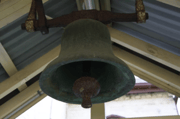Our communities are drowning in gambling losses—this report might be the wake-up call we need
By
Maan
- Replies 0
The bright lights and buzzing sounds of gaming machines have long been a fixture in many pubs and clubs across New South Wales.
But a new report has cast a shadow over the industry, raising troubling questions about oversight, harm reduction, and who’s really paying the price.
What follows is a revealing look into a system that may be failing the very people it’s meant to protect.
The New South Wales government came under heavy scrutiny following the release of a scathing audit that found it had failed to adequately curb the harm caused by gaming machines—despite a decades-old legal mandate to do so.
The Regulation of Gaming Machines report, handed down by Auditor-General Bola Oyetunji on 12 June morning, revealed not only a disturbing rise in gambling losses but also a steady increase in the number of machines—contrary to legislative intentions dating back to 2001.
The report painted a bleak picture of the state’s regulatory approach, highlighting significant gaps in oversight and an alarming lack of strategic planning.
While the Gaming Machines Act was introduced with the goal of winding back machine numbers, recent years have instead seen a reversal of that trend.
As of June 2024, there were 87,749 gaming machines operating in clubs and hotels across the state. That number was up by 958 machines over the past two financial years, and nearly 8000 more could legally be added before the current cap is breached.
‘NSW had 87,749 gaming machines in operation in clubs and hotels at June 2024,’ the report stated. ‘This means the total number of machines operating in clubs and hotels could increase by almost 8000 and remain within the current legislative cap.’
And while the raw figures were startling, what made them even more confronting was the financial toll. In the 2023–24 financial year alone, patrons lost a staggering $8.4 billion playing gaming machines.
‘At this rate, it will take more than 55 years for NSW to reach parity with the national average for gaming machines per 1000 adults,’ the report warned.
The losses were not evenly spread either. According to the audit, lower socio-economic areas of Greater Sydney were hit hardest, with gambling losses disproportionately concentrated in those communities.
Yet, the agencies responsible for keeping gaming machine use in check—the Independent Liquor and Gaming Authority and the Department of Creative Industries, Tourism, Hospitality and Sport—were found to be falling short.
‘The department’s strategy for regulating gaming machines is not based on a clear understanding of current levels of gambling harm and it does not set any targets for reducing harm associated with gaming machines,’ the report said.
It added that the department lacked benchmarks and performance measures to evaluate whether its programs were actually reducing harm, and had not assessed the impact of its compliance efforts.
‘As a result, the department does not know whether its regulatory strategy is effective in minimising gambling harm.’
Enforcement and inspections were also flagged as inadequate. Despite high risks of gambling harm in some rural and regional communities, inspections outside of Greater Sydney were infrequent—and all 12 state inspectors were based in the metro area.
Meanwhile, the signs of worsening harm continued. Calls to the GambleAware Helpline went up by 8.5 per cent in 2023–24, and the most recent NSW Gambling Survey showed no reduction in overall gambling harm across the state.
To address these issues, the auditor-general put forward a series of recommendations, all of which came with a June 2026 deadline for implementation.
Among them was a call for the department to set baselines and targets to measure gambling harm and to review the forfeiture scheme that was supposed to reduce machine numbers by requiring some entitlements be surrendered when transferred between venues.
For the Liquor and Gaming Authority, the report urged regular reviews of licence conditions in high-risk venues to ensure they align with harm minimisation goals.
Gaming and Racing Minister David Harris confirmed the government had accepted all of the recommendations.
‘While the former government over 12 years introduced several initiatives, the NSW Labor government has moved quicker and has implemented more comprehensive reforms over the past two years,’ he said.
‘This is complex reform, and changing behaviour takes time. The Government is currently considering further recommendations from the Independent Panel on Gaming Reform.’
Since taking office in 2023, Premier Chris Minns’ government had already slashed the cash input limit for new gaming machines from $5000 to $500, banned gaming-related signage inside and outside venues, and introduced ‘responsible gambling officers’ in places with more than 20 machines.
Notably, the audit excluded casinos from its scope—focusing only on clubs and pubs.
Still, the findings served as a blunt reminder of the challenges facing NSW as it struggles to balance industry revenue with the urgent need to protect vulnerable communities from gambling harm.
It’s one thing to see the numbers on a page—but hearing real stories from those affected paints a much starker picture. For many Australians, the losses go far beyond money.
Take a moment to watch this powerful investigation and let us know if you’ve seen the impact of pokies in your own community.
Source: Youtube/60 Minutes Australia

With pokies continuing to rake in billions while communities bear the cost, do you think enough is being done to protect everyday Aussies from gambling harm? Let us know your thoughts in the comments.
In a previous story, we looked at how one gambling operator was fined \$500,000 for bombarding users with unsolicited messages—a reminder that aggressive tactics aren’t limited to the gaming floor.
For seniors already concerned about the growing reach of pokies, this kind of behaviour raises even more red flags about how the industry targets vulnerable Australians.
If you missed that story, it’s well worth a read.
Read more: Gambling operator spams users, slapped with $500,000 fine
But a new report has cast a shadow over the industry, raising troubling questions about oversight, harm reduction, and who’s really paying the price.
What follows is a revealing look into a system that may be failing the very people it’s meant to protect.
The New South Wales government came under heavy scrutiny following the release of a scathing audit that found it had failed to adequately curb the harm caused by gaming machines—despite a decades-old legal mandate to do so.
The Regulation of Gaming Machines report, handed down by Auditor-General Bola Oyetunji on 12 June morning, revealed not only a disturbing rise in gambling losses but also a steady increase in the number of machines—contrary to legislative intentions dating back to 2001.
The report painted a bleak picture of the state’s regulatory approach, highlighting significant gaps in oversight and an alarming lack of strategic planning.
While the Gaming Machines Act was introduced with the goal of winding back machine numbers, recent years have instead seen a reversal of that trend.
As of June 2024, there were 87,749 gaming machines operating in clubs and hotels across the state. That number was up by 958 machines over the past two financial years, and nearly 8000 more could legally be added before the current cap is breached.
‘NSW had 87,749 gaming machines in operation in clubs and hotels at June 2024,’ the report stated. ‘This means the total number of machines operating in clubs and hotels could increase by almost 8000 and remain within the current legislative cap.’
And while the raw figures were startling, what made them even more confronting was the financial toll. In the 2023–24 financial year alone, patrons lost a staggering $8.4 billion playing gaming machines.
‘At this rate, it will take more than 55 years for NSW to reach parity with the national average for gaming machines per 1000 adults,’ the report warned.
The losses were not evenly spread either. According to the audit, lower socio-economic areas of Greater Sydney were hit hardest, with gambling losses disproportionately concentrated in those communities.
Yet, the agencies responsible for keeping gaming machine use in check—the Independent Liquor and Gaming Authority and the Department of Creative Industries, Tourism, Hospitality and Sport—were found to be falling short.
‘The department’s strategy for regulating gaming machines is not based on a clear understanding of current levels of gambling harm and it does not set any targets for reducing harm associated with gaming machines,’ the report said.
It added that the department lacked benchmarks and performance measures to evaluate whether its programs were actually reducing harm, and had not assessed the impact of its compliance efforts.
‘As a result, the department does not know whether its regulatory strategy is effective in minimising gambling harm.’
Enforcement and inspections were also flagged as inadequate. Despite high risks of gambling harm in some rural and regional communities, inspections outside of Greater Sydney were infrequent—and all 12 state inspectors were based in the metro area.
Meanwhile, the signs of worsening harm continued. Calls to the GambleAware Helpline went up by 8.5 per cent in 2023–24, and the most recent NSW Gambling Survey showed no reduction in overall gambling harm across the state.
To address these issues, the auditor-general put forward a series of recommendations, all of which came with a June 2026 deadline for implementation.
Among them was a call for the department to set baselines and targets to measure gambling harm and to review the forfeiture scheme that was supposed to reduce machine numbers by requiring some entitlements be surrendered when transferred between venues.
For the Liquor and Gaming Authority, the report urged regular reviews of licence conditions in high-risk venues to ensure they align with harm minimisation goals.
Gaming and Racing Minister David Harris confirmed the government had accepted all of the recommendations.
‘While the former government over 12 years introduced several initiatives, the NSW Labor government has moved quicker and has implemented more comprehensive reforms over the past two years,’ he said.
‘This is complex reform, and changing behaviour takes time. The Government is currently considering further recommendations from the Independent Panel on Gaming Reform.’
Since taking office in 2023, Premier Chris Minns’ government had already slashed the cash input limit for new gaming machines from $5000 to $500, banned gaming-related signage inside and outside venues, and introduced ‘responsible gambling officers’ in places with more than 20 machines.
Notably, the audit excluded casinos from its scope—focusing only on clubs and pubs.
Still, the findings served as a blunt reminder of the challenges facing NSW as it struggles to balance industry revenue with the urgent need to protect vulnerable communities from gambling harm.
It’s one thing to see the numbers on a page—but hearing real stories from those affected paints a much starker picture. For many Australians, the losses go far beyond money.
Take a moment to watch this powerful investigation and let us know if you’ve seen the impact of pokies in your own community.
Source: Youtube/60 Minutes Australia
Key Takeaways
- NSW gaming machine numbers increased despite a 2001 law aimed at reducing them.
- Gamblers lost $8.4 billion in 2023–24, with losses hitting lower-income areas hardest.
- Regulators lacked clear harm minimisation targets and failed to evaluate compliance programs.
- The government accepted recommendations to improve oversight, with changes due by June 2026.
With pokies continuing to rake in billions while communities bear the cost, do you think enough is being done to protect everyday Aussies from gambling harm? Let us know your thoughts in the comments.
In a previous story, we looked at how one gambling operator was fined \$500,000 for bombarding users with unsolicited messages—a reminder that aggressive tactics aren’t limited to the gaming floor.
For seniors already concerned about the growing reach of pokies, this kind of behaviour raises even more red flags about how the industry targets vulnerable Australians.
If you missed that story, it’s well worth a read.
Read more: Gambling operator spams users, slapped with $500,000 fine
Last edited:








